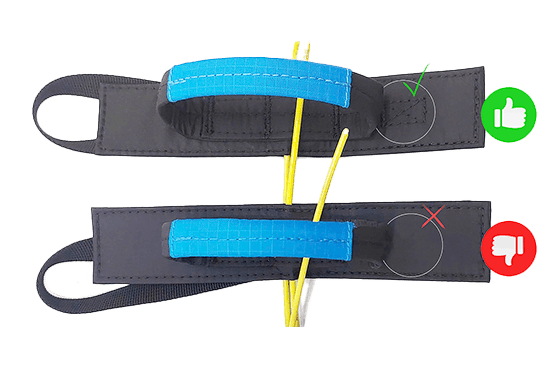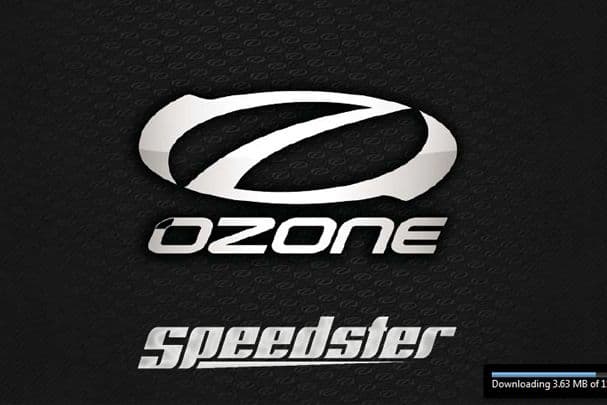

Ozone Reflex Profile (OZRP) Q&A With Dav Dagault
Published on:
09 Feb 2009
David Dagault is Ozone's Designer and Chief Test Pilot, and is responsible for the success of Ozone's PPG range including of course the Viper Series. With the advent of 'reflex' profiles, many questions have emerged regarding the design theory and flight practice for reflex wings. The OZRP is explained behind the link at left (check it out if you haven't already), but we'd like to offer a few more answers regarding flight practice.
Flying questions regarding technique and practice should be directed to your local (trusted and experienced) instructor, but Dav has offered some advice for pilots who are looking for further information on the trimming and tip steering systems of modern wings such as the Viper 2.
QUESTION: There are 2 steering systems on the Viper 2. When, and in what conditions, should I use each?
ANSWER: The Viper2 has the normal brake steering which you should use the majority of the time. However, as described above, when flying at high speeds and low angles of attack it is not ideal to use the brakes.
There of course needs to be an alternative to steer the wing at these high speeds. The main demand came from competitive pilots who must achieve sharp turns, very close to the ground, in order to run slalom courses in the minimum of time.
This how the tip steering was born, and we think our system is the most efficient that you can find today: It not only pulls the stabilo down like most previous systems (that influences mainly the roll of the wing), but also controls the yaw of the wing and is therefore more effective with less input.
Once again, flying accelerated and/or untrimmed should only be done by expert pilots and in very calm conditions, and obviously only with plenty of altitude to recover from any situation.
QUESTION: I heard that when in turbulence, wings with reflex are better steered by the C-risers. Is this true?
ANSWER: If you’re flying at trim speed, you’ll fly your wing as normal with your brakes, no special technique is needed.
If you’re flying very fast, at low angle of attack (full speed and / or trimmers released), it is not recommended to touch the brakes in this configuration since there is a risk of collapse.
This comment is true when speaking of wings with or without reflex in their profiles.
The technique of steering with the rear risers comes from the free flight competition scene, where pilots have to fly fast and prevent collapses without sacrificing speed.
It must be said that the best way to prevent a collapse is to reduce the amount of accelerator / trimming, but by holding the C’s and pulling the necessary amount, it will help to prevent a collapse before finishing the release of the accelerator and returning the trimmers to normal flight.
QUESTION: In what conditions should I NOT fly with trimmers extended, for instance, in what kinds of turbulence?
ANSWER: We recommend that pilots use the accelerator instead of the trimmers, simply because in case of turbulence you can immediately go back to standard trimming by releasing the speed bar, which will guaranty better behavior in the case of a collapse.
More generally, the speed bar is more effective because you can “actively” fly with the accelerator. By pushing more or less speed bar, you can adjust the pitch of your wing to minimize the variations in angle of attack caused by active air.
There is no turbulence scale that can dictate when pilots can safely fly “trimmers released”. It depends on the skill and experience of each individual pilot. Flying with trimmers released should only be done in extremely calm conditions, with no thermals and no wind, and the full knowledge that in the case of a collapse the wings' reaction could be extremely dynamic.
QUESTION: Should I use active piloting techniques, such as free flight pilots use?
ANSWER: Yes, why not? It is true that the reflex provides more “solidity and collapse resistance” to the wing, compared to a free flying wing. But that doesn’t mean you should not actively pilot the wing. The same rules apply as for a free flying wing: If it’s a rough and turbulent day, you will actively fly your wing. If you’re on glide down along a snowy slope in a winter, with no wind and no thermals, you’ll be able to relax.
It’s the same with paramotor wings: You need to give the necessary attention and the amount of “active piloting” that is required for every moment of flight.






